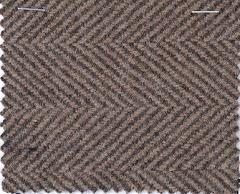Chiengora is dog-hair wool spun from dog hair, and is is up to 80% warmer than wool.

Chiengora looks similar to angora and is furry and very soft, and tends to “fluff” with use, creating a halo effect.
It is warm, even in very low temperatures, and it sheds water well.
Chiengora has become all the rage among a select group of dog-owning knitters and spinsters everywhere.
It’s pronounced “she-an gora”, chien is “dog” means French, and “gora” is short for “angora.” Angora, of course, is the name for bunny hair, which chiengora actually resembles in texture.
But dog hair? Is this some weird manifestation of America’s twisted obsession with its pets? Well, maybe, but the practice probably began eons ago.
There’s evidence that old Scandinavian tribes and Navajo Indians are among the ancient civilizations that spun clothing from dog hair. And why not?
Dog hair is water resistant and comes in a variety of colors from rusty red to jet black. Plus, the dog’s been around our homes, shedding wads of its hair all over our chintz sofas twice a year, for at least 10,000 years.
If we have to collect the hair anyway, why not put it to good use?
If you’re looking to purchase the yarn, however, you may run into a snag. For the most part, chiengora hobbyists spin yarn from their own dogs.
For more information on how to do this, and how to get the doggy smell out of the hair before spinning it, visit your local pet store.
Chiengora is often blended with wool during the carding process because the blend has some give to it, which is preferable when knitting.
Plus That Wet Dog Smell Free.
